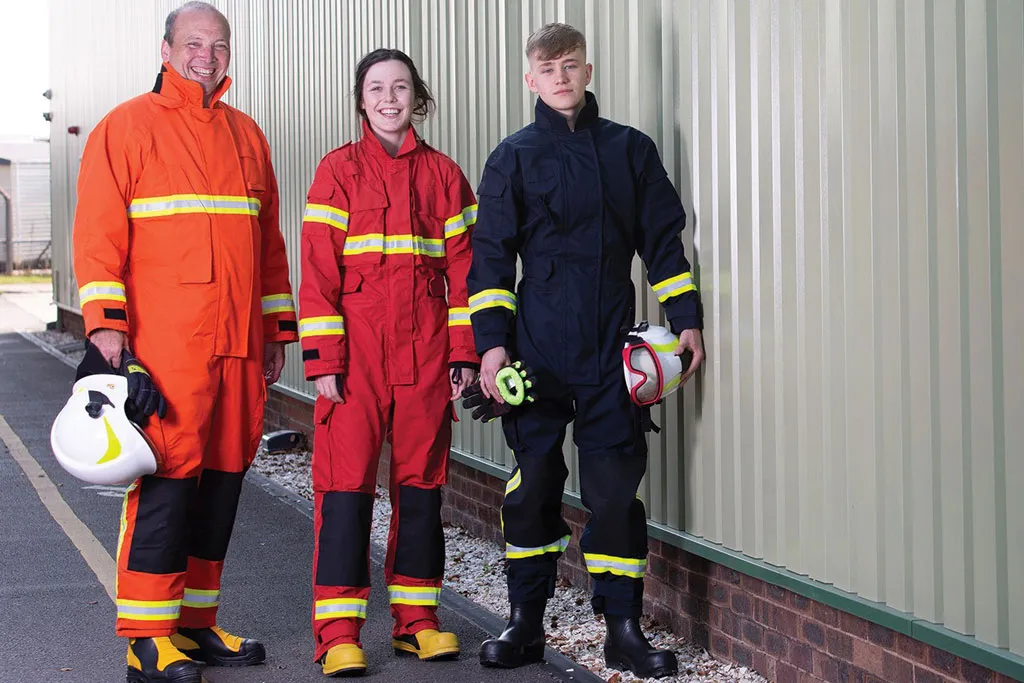Safety & Protective Coverall Dubai, UAE
Having said that, with all the types of coveralls, fabric, and safety ratings available, selecting the right coverall can sometimes feel as complicated as trying to decipher a technical manual. We will help you break it down for you.


Why Safety Coveralls are Important
In Dubai’s diverse industries, coveralls aren’t just worn for protection, but they provide a professional appearance and compliance with workplace regulations. Investing in coveralls means that companies can reduce downtime from injuries and improve productivity, while demonstrating that they genuinely care about their employee’s wellbeing.
At Budget Uniform, our safety coveralls are designed to perform when it’s needed most while keeping comfort in mind.
Industries That Rely on Safety Coveralls
Construction and engineering
Protection against dust and debris, and heat exposure.
Oil and gas
Flame resistant coveralls to safeguard against flames and static electricity.
Manufacturing
In assembly lines and metal works, coveralls act as a covering to mitigate injury and contamination.
Chemical industries
chemical resistant fabric to mitigate splashes of dangerous chemicals.
Healthcare facilities and laboratories
provide disposable coveralls for hygiene of cross-contamination.
Food processing units
lightweight coveralls are made to maintain cleanliness and sanitary situations.
Types of Safety Coveralls
Type 1
Flame-Retardant Coveralls
Features:
- Anti-static protection
- Resistance to flash fire and radiant heat
- Breathable yet durable construction
- Meets EN ISO 11612 safety standards
Type 2
Chemical-Resistant Coveralls
Specifications:
- Made of coated materials such as PVC, Tychem®, or polyethylene blends
- Offers resistance to acids, alkalis, and solvents
- Lightweight for ease of movement
- Welded seams for maximum protection
Type 3
Disposable Coveralls
Common materials:
- Polypropylene (PP)
- SMS (Spunbond + Meltblown + Spunbond) fabric
- Microporous laminate film
- Lightweight and breathable
- Protects against dirt, dust, and light splashes
- No maintenance or washing required
- Cost-effective for bulk operations
Protective Coveralls: Fabric Matters More Than You Think
Cotton and Cotton Blends
- Soft, breathable, and suitable for moderate-risk applications.
- Best used in climate-controlled or indoor environments.
- Can be treated with FR coatings for flash flame safety.
Polyester-Cotton (Poly-Cotton) Blend
- Strength without sacrificing breathability.
- Will not shrink or wrinkle.
- Widely used in construction and other service-based uniforms.
Synthetic Performance Fabrics
- Made for high level performance safety.
- Types resist abrasion, water, and certain chemicals.
- Best suited for heavy industrial applications.
Microporous Film Laminates
- Commonly used in lightweight or disposable coveralls.
- Repels the liquid but allows moisture vapour to escape.
Our After Sales Support
Sizing and Fit Modifications
We ensure that every worker has the appropriate fit to move comfortably.
Replacement Club
A quick turnaround for worn or damaged coveralls.
Bulk Reorders
Simplified process for repeat corporate customers.
Fabric Maintenance Information
Suggestions for washing, storage, and re-treating flame-resistant apparel.
Why Choose Budget Uniform?
Customization
Include company logo embroidery, reflective tapes, and color options.
Range
Flame resistant, disposable, and chemical resistant options available in sizes to fit everyone.
Compliance
All fabrics are aligned with international standards such as EN ISO, NFPA, and ASTM.
Value Pricing
We deliver superior protection without superior pricing.

WE ARE PROUD TO BE WORKING WITH




FAQ
Protective coveralls were developed to offer a high level of safety when doing work-related activities. Their primary role is to safeguard the worker from risks such as chemical, biological, mechanical, thermal, electromagnetic, and electrical. They can either be worn over personal clothes or instead of personal clothes.
We at Budget Uniforms are the top safety coverall suppliers in Dubai. Call us for choosing the right protective coveralls for your company.
a. Clean regularly by following the manufacturer’s instructions based on the coverall type
b. Get rid of foul smells and wash them till you get rid of the bad odor.
c. Don’t use peroxide or bleach to clean the coverall.
d. Seek help from professional cleaning agencies
e. Make sure to check your coverall regularly for any wear and tear signs. f. Fix any tears or holes immediately.
a. Create a detailed explanation of the task.
b. Conduct a hazard analysis. Determine all risks that might necessitate chemical protection, including a list of the chemicals involved, their interactions, physical risks like abrasion, ripping, piercing, fire or flames, temperature, environmental threats, or biological risks.
c. Determine the possible exposure type. Gas, liquid, or vapor? Protection against splashes or infrequent contact?
d. Determine the length of time the user will be exposed to the chemical. Take note of any possible cutaneous or inhalation effects. Along with any potential adverse effects on the entire body from absorbing the chemical through the skin, the skin’s irritability or corrosion must be taken into account.
e. Think about if wearing the protective clothes may present new risks. For instance, fully enclosed suits may cause heat stress, bulky gloves may impair dexterity, and using heavy equipment may make one tired.
f. Check to see if you have the resources, expertise, and tools necessary to support the decontamination procedure. If so, think about investing in reusable equipment; otherwise, disposable clothes are usually preferred.
g. Check to see if the equipment calls for any special training, practices, or procedures.
h. Check for manufacturer’s specifications. If you have any questions, speak with a distributor or a manufacturer’s representative.
